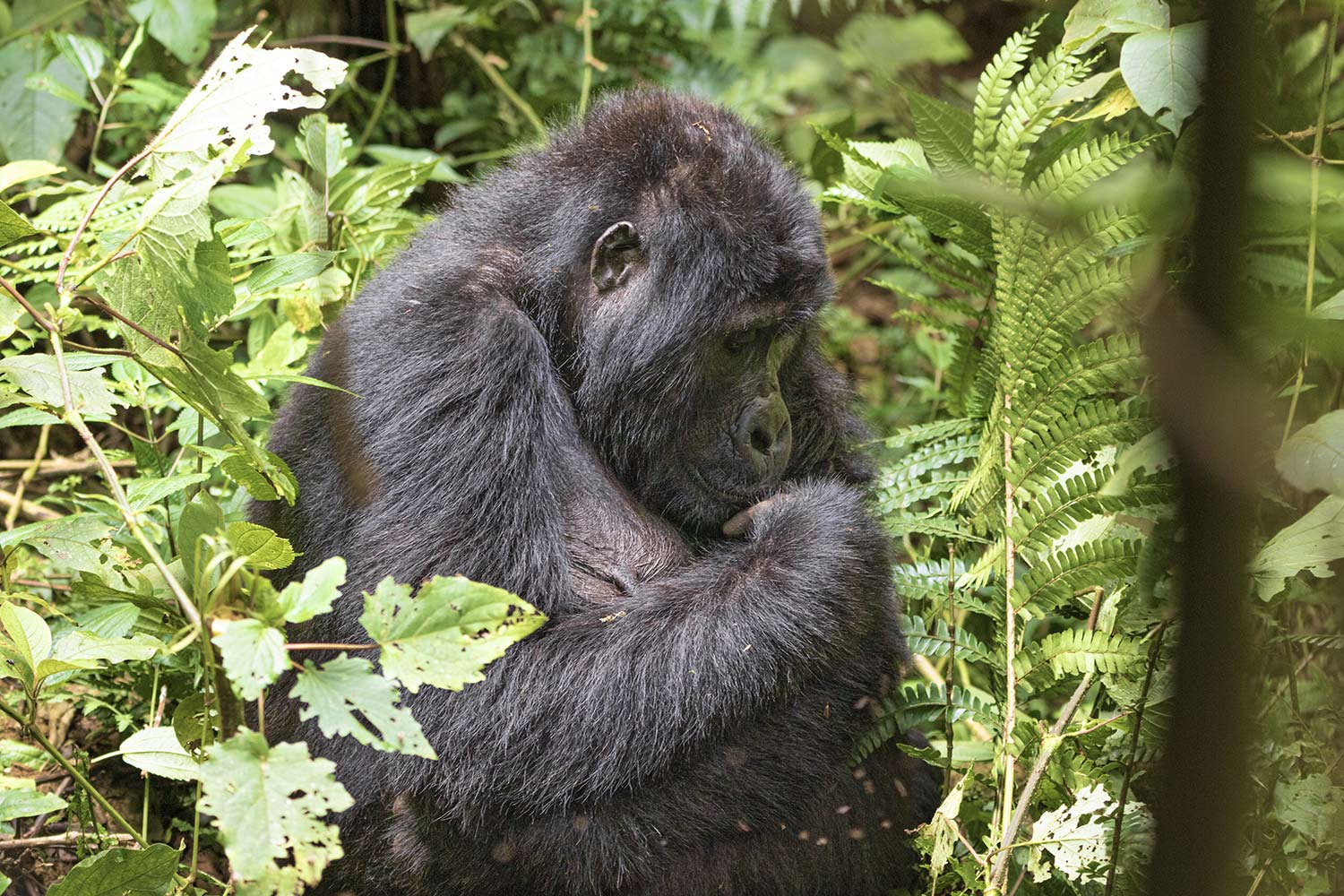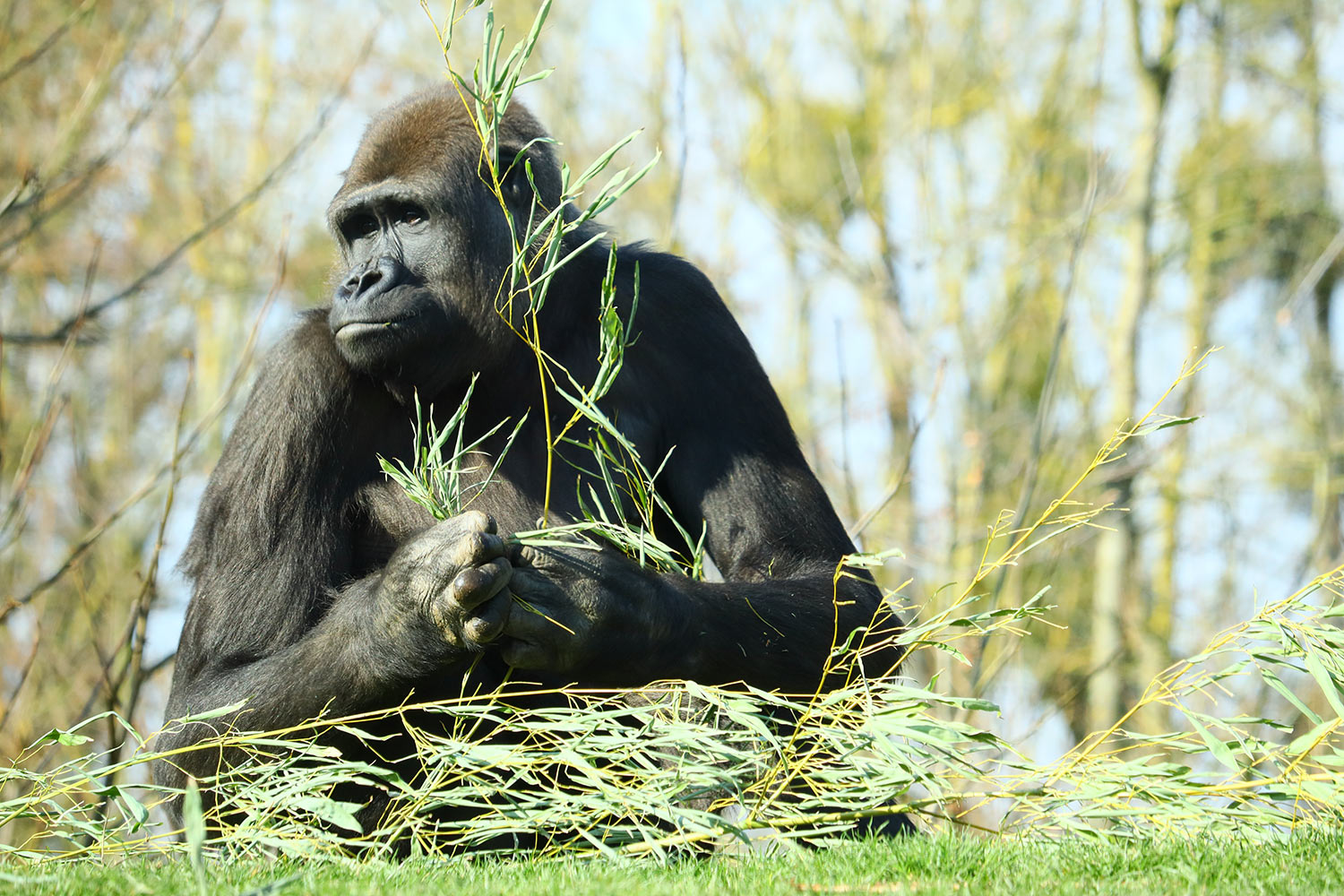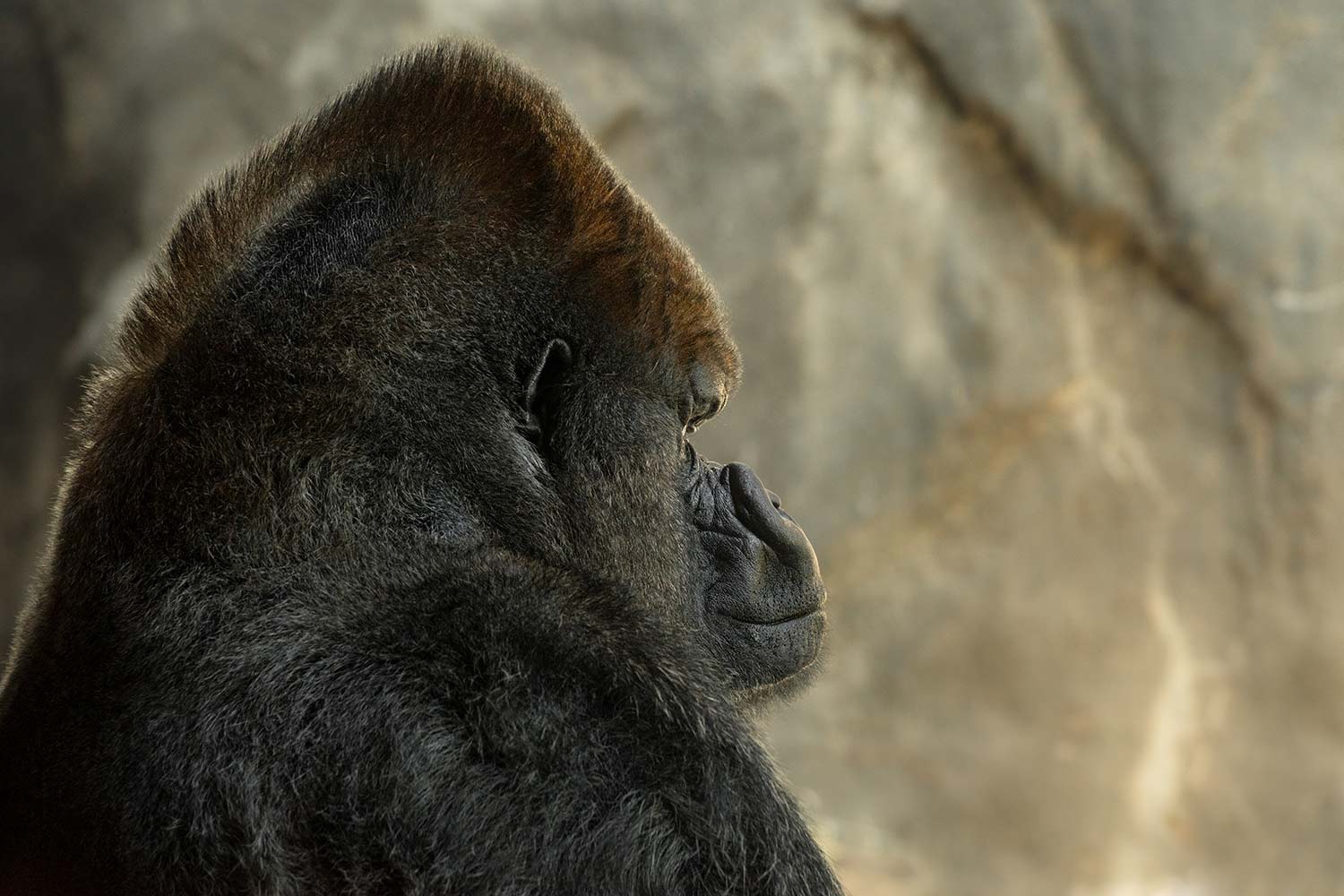Meet Hanno the Gorilla, a fascinating creature with a name inspired by the ancient explorer Hanno the Navigator. This connection highlights the spirit of adventure and exploration, much like the journeys Hanno embarked on along the African coast. Gorillas, including Hanno, are known for their intelligence and strong family bonds, making them truly special!

Origin
Gorillas, members of the Hominidae family, share ancient roots with humans, chimpanzees, and orangutans. Evolving over 10 million years in Africa, they developed into two main species: Western and Eastern gorillas. Adapted to diverse habitats, from jungles to mountains, these gentle giants are a testament to evolution’s power.
Risk Level
Gorillas are currently classified as endangered, facing significant risks due to habitat loss, poaching, and diseases. Their populations have been declining, particularly in regions where deforestation and human encroachment are prevalent.
Species
There are two main gorilla species Western and Eastern each with distinct subspecies. Western gorillas include the lowland and Cross River gorillas, while Eastern gorillas include the lowland and critically endangered mountain gorillas. Found in central and western African forests, they support biodiversity through their feeding habits.
Status
Gorillas are endangered, facing a high risk of extinction due to habitat loss, poaching, and disease. Without urgent conservation efforts, we risk losing them forever impacting ecosystems and reducing biodiversity.
Why is ‘Hanno’ important to the eco-system?
Hanno the Gorilla plays a vital role in his ecosystem by helping to maintain the health of the forest. As a herbivore, he consumes large amounts of leaves, fruits, and plants, which helps to control vegetation growth and promote biodiversity.
By spreading seeds through his dung, Hanno also contributes to the growth of new plants, supporting the entire food chain in his habitat.

Measuring the Risk of Extinction
A species is considered critically endangered if it has lost 80% or more of its geographic range, and has a greater than 50% chance of extinction over the next 10–100 years.
Some gorilla subspecies such as the Mountain gorilla and the Cross River gorilla are classified as Critically Endangered. This means they face an extremely high risk of extinction in the wild due to threats like habitat destruction, poaching, and disease. Conservation efforts are essential to protect these majestic primates and the ecosystems they support.
According to the IUCN Red List, two of the four gorilla taxa are classified as Critically Endangered [source]
A species is considered endangered if it has lost more than half of its geographic range, and has a greater than 20% chance of extinction over the next 10–100 years.
The Mountain gorilla is listed as Endangered by the IUCN, with about 1,000 individuals remaining. Thanks to strong conservation efforts like habitat protection and anti-poaching its population is slowly recovering. However, threats like disease and habitat loss still put this species at risk.
The Mountain gorilla is classified as Endangered by the IUCN, with only around 1,000 individuals remaining in the wild. [source]
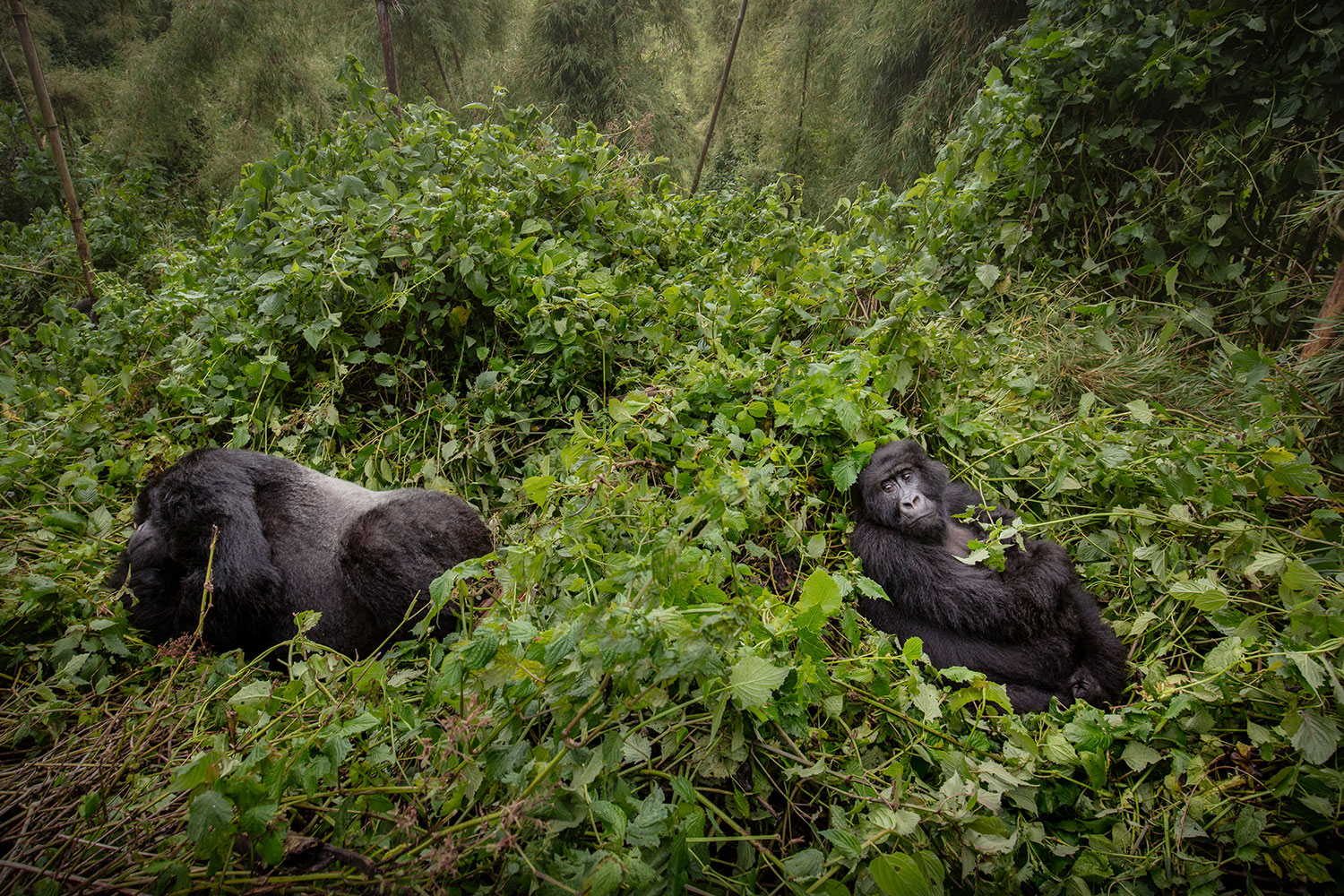
A species is considered vulnerable if there is a greater than 10% chance that it goes extinct in the wild within 100 years.
Some gorillas are classified as Vulnerable by the IUCN, meaning they face a high risk of extinction in the wild. Although their situation is less severe than Endangered or Critically Endangered species, they are still threatened by habitat loss, hunting, and disease. Continued conservation efforts are essential to prevent further decline and support their long-term survival.
A species is close to meeting the definition of endangered, vulnerable, or critically endangered based on recent trends.
According to the IUCN Red List, no gorilla species or subspecies are currently classified as “Near Threatened (NT)”. All gorillas fall into higher-risk categories Endangered or Critically Endangered reflecting the significant threats they face toda
A species is widespread, abundant, and not threatened with extinction.
According to the IUCN Red List, no gorilla species or subspecies are classified as “Least Concern”. All gorillas are facing significant threats and fall into higher-risk categories either Endangered or Critically Endangered. This means that unlike many other animals, gorillas aren’t abundant or safe enough for a “Least Concern” status. Every remaining gorilla population requires active conservation efforts to ensure its survival.
Measuring the Risk of Extinction
A species is considered critically endangered if it has lost 80% or more of its geographic range, and has a greater than 50% chance of extinction over the next 10–100 years.
Some gorilla subspecies such as the Mountain gorilla and the Cross River gorilla are classified as Critically Endangered. This means they face an extremely high risk of extinction in the wild due to threats like habitat destruction, poaching, and disease. Conservation efforts are essential to protect these majestic primates and the ecosystems they support.
According to the IUCN Red List, two of the four gorilla taxa are classified as Critically Endangered [source]

A species is considered endangered if it has lost more than half of its geographic range, and has a greater than 20% chance of extinction over the next 10–100 years.
The Mountain gorilla is listed as Endangered by the IUCN, with about 1,000 individuals remaining. Thanks to strong conservation efforts like habitat protection and anti-poaching its population is slowly recovering. However, threats like disease and habitat loss still put this species at risk.
The Mountain gorilla is classified as Endangered by the IUCN, with only around 1,000 individuals remaining in the wild. [source]
A species is considered vulnerable if there is a greater than 10% chance that it goes extinct in the wild within 100 years.
Some gorillas are classified as Vulnerable by the IUCN, meaning they face a high risk of extinction in the wild. Although their situation is less severe than Endangered or Critically Endangered species, they are still threatened by habitat loss, hunting, and disease. Continued conservation efforts are essential to prevent further decline and support their long-term survival.
A species is close to meeting the definition of endangered, vulnerable, or critically endangered based on recent trends.
According to the IUCN Red List, no gorilla species or subspecies are currently classified as “Near Threatened (NT)”. All gorillas fall into higher-risk categories Endangered or Critically Endangered reflecting the significant threats they face toda
A species is widespread, abundant, and not threatened with extinction.
According to the IUCN Red List, no gorilla species or subspecies are classified as “Least Concern”. All gorillas are facing significant threats and fall into higher-risk categories either Endangered or Critically Endangered. This means that unlike many other animals, gorillas aren’t abundant or safe enough for a “Least Concern” status. Every remaining gorilla population requires active conservation efforts to ensure its survival.
100% Recycled: Head to Toe!

The fabric
We scour the best recycled material fabrics so that our plush always feels premium and soft to the touch!
Hang Tag
The Hangtag is made of recycled paper and attached with a Recycled Polyamide attacher.
Embroidery
Even our threads are recycled! They are extensively used in creation of adorable eyes!
Call of the Wild: Learning Den
Let’s get inspired to reconnect with nature! Discover cool facts about amazing animals, their families, and why they’re so important for keeping our planet wild and beautiful. It’s time to learn, explore, and take action to protect the incredible creatures that share our world.
40
25
1000
Hangin’ with the Gorilla Gang!

Fun Facts: Nature Nuggets!

When baby gorillas are born, they’re about the size of a loaf of bread, but don’t be fooled—by the time they’re grown, they’ll be as big as a refrigerator

Gorillas have unique nose prints, much like human fingerprints, which can be used to identify them.

Gorillas love to drum on their chests, creating a booming beat that can be heard throughout the jungle, making them the original rock stars of the animal kingdom!

